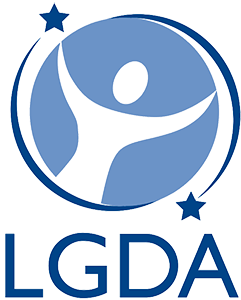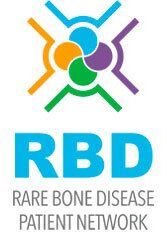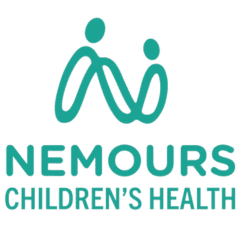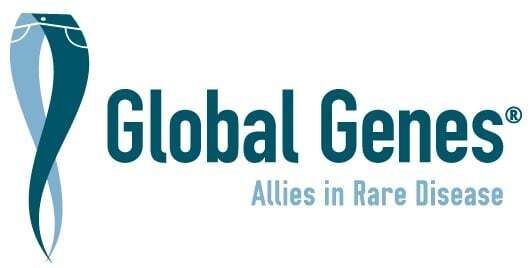Download a PDF file of the FAQs
- Why should I/my child be seen by a vascular anomalies team?
- My son is 16 and his disease is in remission. His doctor no long thinks it’s necessary to see him or refer him to an adult centre? What should I do?
- What imaging and tests should I/my child expect to have to monitor the disease?
- Does the disease (GLA/GSD) seem to stay localized to the parts of the body that were originally affected or does it spread?
- Is the disease hereditary?
- What can make the disease become active? Trauma, infection, puberty, pregnancy…
- Why do we get so much pain with this disease?
- Why child’s symptoms are only present in the right arm. Why do we need a full MRI?
- What is a ‘flare up’?
- Vaccines - Is it safe for me/my child to get the COVID vaccine? Should we receive the flu and pneumonia vaccine? Can we have live vaccines? Could a vaccine trigger the disease to become active?
- Does Lymphatic Drainage Massage work?
- Low fat diets - do they work?
- How long can/should a patient be on sirolimus? Can it be used for life? Should I/my child be monitored whilst on this drug? What does that look like?
- What are the reported side effects of sirolimus?
- Should I take an antibiotic whilst on Sirolimus?
- How is Alpelisib different to Sirolimus?
- What medication helps improve bone?
- Why do they have to use drug combinations?
- Should I be taking supplements? If so, what?
- We are currently waiting for an appointment with genetics. What should I expect?
- My child has a CLA. Why did her tissue biopsy come back negative? Why can’t the gene mutation be found in the blood?
- Why is having surgery or a biopsy risky? Why can they not remove the lymphatic mass?
- Why do some lymphatic malformations keep growing even if they have been surgically removed?
-
Why should I/my child be seen by a vascular anomalies team?
Vascular anomaly clinics are staffed by doctors from different specialities who have a knowledge of CLA and their treatments. These teams provide comprehensive care for patients with many different types of vascular anomalies including CLAs.
-
My son is 16 and his disease is in remission. His doctor no long thinks it’s necessary to see him or refer him to an adult centre? What should I do?
If the doctor wants to sign off on your son’s care, then the family should speak to the doctor to understand why and be assured that this is the right decision. They should also plan with the doctor what to do if new symptoms or concerns arise.
-
What imaging and tests should I/my child expect to have to monitor the disease?
It is difficult to say exactly without knowledge of the patient’s diagnosis, complications and treatments to date. In general MRIs are the imaging tests used to help diagnose and monitor CLAs. In addition, routine and specialized laboratory tests are used to monitor most patients with CLAs. The specific tests and frequency of monitoring depend on the diagnosis, complications and treatments.
-
Does the disease (GLA/GSD) seem to stay localized to the parts of the body that were originally affected or does it spread?
CLAs are thought to be caused by changes in specific genes early in development. We believe most patients are born with their disease. However, not all disease is evident at birth and disease in different locations may become clinically evident at different times. This gives the impression that the disease may be spreading when in actuality the disease has always been there but not evident.
-
Is the disease hereditary?
Almost all CLAs are caused by changes in genes occurring in cells in specific locations in the body. These are called somatic gene mutations. Only occasionally are CLAs caused by inherited gene mutations.
-
What can make the disease become active? Trauma, infection, puberty, pregnancy…
We are still learning what “triggers” CLAs to become more active or to “flare”. We know from clinical observations that trauma, illness such as infection and changes in hormones such as occurs during puberty and pregnancy can influence disease activity. We have a great deal to learn about triggers for specific diseases and why there is so much variability between individual patients. Patient participation in clinical trials and in patient registries will help us answer these important questions.
-
Why do we get so much pain with this disease?
The simple answer is we know some of the reasons for pain but not all. We do know disease pain can occur as a result of disease involvement. Pain can occur as a result disease involvement of bone, soft tissues like skin or organs like the intestines or lungs. Increased pain is often seen with a “flare” in disease. So, triggers of worsening disease like infection, trauma or changes in hormones can lead to increased pain. We believe that in many of these cases inflammation drives increases in pain. Many of the medications that are prescribed for pain like ibuprofen, Tylenol and Aspirin work in part by reducing inflammation.
Participation in clinical trials and patient registries will provide much needed insight into causes of pain and which treatments work best. Animal models of disease may provide insight into specific mechanisms causing pain in CLAs. Better understanding of mechanisms leading to pain will help us craft more effective therapies to better treat pain in patients.
-
Why child’s symptoms are only present in the right arm. Why do we need a full MRI?
Depending upon your child’s diagnosis, he/she may have disease in other parts of his/her body that may not be causing noticeable problems (like pain or difficulty breathing). Full MRI is way to keep track of those other areas of disease that are not yet causing your child problems.
-
What is a ‘flare up’?
Disease “flare” is a term used to describe an increase in disease activity or symptoms related to CLAs (like pain).
-
Vaccines - Is it safe for me/my child to get the COVID vaccine? Should we receive the flu and pneumonia vaccine? Can we have live vaccines? Could a vaccine trigger the disease to become active?
We would encourage you to discuss appropriateness of vaccines with your doctor. It is recommended that patients with CLAs whether or not they are receiving medical treatment should receive routine vaccines including the seasonal flu vaccine. You should discuss the appropriateness of live vaccines with your doctor as there are specific situations where they should not be given.
Most doctors and experts are advocating that patients with serious underlying medical conditions or patients who are immunocompromised receive the COVID vaccine when they are eligible. These vulnerable populations (including CLAs) have a significantly higher risk of severe disease and death if infected with COVID. The vaccine is safe with rare side effects.
There are no published reports to suggest that vaccination could trigger disease activity.
-
Does Lymphatic Drainage Massage work?
Yes. Message therapy has been proven to help with lymphedema caused by a variety of different diseases including CLAs that result when the lymphatic vessels do not function properly. Message therapy is often used in combination with compression garments to help move lymph fluid from the extremities back toward the heart.
-
Low fat diets - do they work?
Yes. Low fat diets reduce the amount of fat absorbed in your intestines and transported to your lymphatic vessels. The effect reduces the amount of lymphatic fluid in your central lymphatics. Having less lymph fluid in your central lymphatics can help reduce the amount of fluid leaked in and around the lungs and in your abdomen. Low fat diets are used in most patients for a few weeks to a few months to buy time while new therapies are being started. Long term use of low-fat diets are rarely successful.
-
How long can/should a patient be on sirolimus? Can it be used for life? Should I/my child be monitored whilst on this drug? What does that look like?
Treatment with sirolimus is a decision to be made with your doctor. For many patients there are potential benefits. There are also potential unwanted effects related to the drug.
Everyone on sirolimus should be monitored on a regular basis to ensure the drug is effective and for potential side-effects. Monitoring typically includes a history, physical exam and laboratory testing and imaging. Regular blood tests are also needed to monitor the levels of sirolimus in the blood, so it remains constant. The frequency of monitoring is influenced by a number of factors and should be discussed with your doctor. The length of treatment is influenced by the clinical benefit and toxicities experienced by individual patients. Some patients have been safely treated with sirolimus for many years.
-
What are the reported side effects of sirolimus?
Sirolimus has many potential side effects that range in severity. Sides effects can occur while taking the medicine (short-term) or in the future (long term). Side effects are influenced by a variety of factors including the age of the patient, disease severity, the drug level being targeted, and additional patient medications and medical problems. Finally, sirolimus can be metabolized slower or faster in some patients making side effects more or less likely, respectively.
The most common side effects experienced by patients with vascular anomalies treated with sirolimus include mouth sore (stomatitis), skin changes (acneiform eruptions), lower blood counts, gastro-intestinal problems (diarrhea) and rises in cholesterol and/or lipids in the blood. Less common but more severe side effects include infection, reduced kidney function and severe diarrhea.
-
Should I take an antibiotic whilst on Sirolimus?
Great question. We encourage you to discuss this question with your doctor as there is no consensus answer to this question.
Antibiotics are often prescribed to immune compromised patients to help prevent infection. Patients with CLAs often have lower immune function due to their underlying disease. However, the degree of immune functions vary significantly between patients and can vary significantly in individual patients depending upon the disease activity and complications experienced. Sirolimus is an immune suppressant that can further reduce an individual’s immune function. Bactrim is used to prevent a rare but potential deadly infection caused by Pneumocystis jiroveci Pneumonia (PJP). Many but not all doctors prescribe Bactrim to CLA patients treated with sirolimus.
-
How is Alpelisib different to Sirolimus?
Both are drugs that are used to treat some patients with CLAs. Alpelisib is a drug that specifically inhibits the enzyme Phosphatidyl Inositol 3 Kinase (PI3K). PI3K is hyperactivated in certain patients with PIK3CA gene mutations leading to overgrowth and some CLAs. Alpelisib is currently only used in patients with a known PIK3CA gene mutation.
Sirolimus specifically inhibits a different protein complex called mTOR. mTOR is activated in most patients with vascular anomalies including CLAs. Sirolimus and Alpelisib are used to help reduce complications in patients with CLAs and other diseases.
-
What medication helps improve bone?
Bone is often affected by abnormal lymphatics in patients with CLAs. There are a number of medications that can help improve bone health in patients with CLAs. These include certain vitamins (vit D) and minerals (calcium). Drugs used to treat CLAs like sirolimus, Alpelisib, interferon and/or bisphosphonates can also improve bone mineralization and health by treating the underlying disease. Bisphosphonates also specifically reduce the activity of bone cells called osteoclasts and as a result directly interfere with the breakdown/loss of bone. Patients on bisphosphonates should be monitored carefully by bone experts to help avoid significant complications.
-
Why do they have to use drug combinations?
The most common reason for using drug combinations to treat disease is that a single drug does not achieve the wanted effect or patients experience significant side effects at drug doses required to control the disease.
-
Should I be taking supplements? If so, what?
Most patients will benefit from vitamin D and calcium supplements. We would encourage you to discuss any new supplements with your doctor before starting.
-
We are currently waiting for an appointment with genetics. What should I expect?
Your Genetics appointment will be scheduled with a genetic counselor and/or a physician specialized in genetics (known as a medical geneticist). During the visit, the Genetics provider will review your medical history and take a detailed family history. If a geneticist is involved in your visit, the evaluation may also include a physical exam. The Genetics provider will discuss genetic testing options and possible outcomes of genetic testing.
-
My child has a CLA. Why did her tissue biopsy come back negative? Why can’t the gene mutation be found in the blood?
The success of identifying a gene mutation from tissue biopsy depends on multiple technical and biological factors. Let’s focus on the biology of CLAs. What we know is that mutations in genes that cause CLAs occur early in development and only in certain cells/tissues. The mutated gene alters the behaviour of cells in which it occurs. In addition, the cells carrying the gene mutation can also change the behaviour of “normal” cells (without the gene mutation) in the vicinity. So small numbers of cells carrying the mutated gene can affect large numbers of cells in the region causing abnormal growth and development of lymphatic malformations. As a result, the number or frequency of cells carrying the gene mutation in affected tissue might be too low to detect on standard genetic testing. The low frequency of the gene mutation is one reason why you may not be able to detect the genetic change in the blood. Another reason might be that the genetic change is not present in the blood cells.
-
Why is having surgery or a biopsy risky? Why can they not remove the lymphatic mass?
Most patients with CLAs have extensive disease involving multiple tissues that cannot be totally removed by surgery. However, taking a small sample of tissue (biopsy) for diagnosis and/or genetic studies is safe in most patients with CLAs. However, there are some situations where there is an increased risk. Patients with KLA have a higher likelihood of bleeding and often require blood products to reduce the risk of bleeding during and after biopsy. Biopsy of the ribs should be avoided to reduce the risk of developing effusions around the lungs. Although many believe that a bone biopsy can trigger disease progression especially in GSD,
there are limited reports to support this claim. -
Why do some lymphatic malformations keep growing even if they have been surgically removed?
The short answer is the surgeon can only remove what he/she sees at the time of surgery. Most of the time there are parts of the LM that the surgeon cannot see that remain after surgery. The remaining abnormal lymphatic vessels then fill with fluid and overtime become clinically evident.











